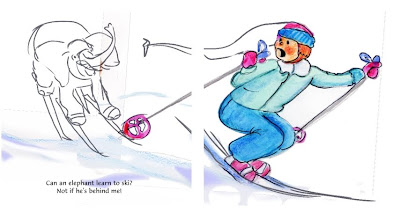Follow our Pinterest Boards
A narrative arc is a necessary part of fiction and is often a key component of nonfiction, especially narrative nonfiction. The arc indicates that there is some sort of progression.
Emotional Progression. The most common sort of progression is for the emotions to build to a climax. If two characters are arguing, the intensity, complexity and depth of the argument grows over the course of the story. It is mad, madder, maddest. If it is a verbal argument, it spills over into physical actions.
Character Progression. Similar to the first is the progression of a character through stages of change. This could be a change from doubt to faith, or loyalty to betrayal. The direction of the change can be in any direction, from moral to immoral or vice versa. The main thing is that there isn’t a steady state for the character, but there is change.
Plot Progression. This is partly the time-line of the story, but plot progression also implies that the events included int he story are intertwined in some way that leads to a bigger event or an event that means more than the previous events.
For narrative nonfiction, there can be other sorts of progressions, which will mimic or replace the narrative arc. Fiction writers will want to pay attention to these, too, because within a story, there may be places where some information would benefit from strategic organization. For example, my first picture book, THE RIVER DRAGON, had a series of descriptions of a dragon’s voice. Here’s the progression I used in which the metal mentioned became more base and the sounds became louder: a voice like the clink of copper coins, voice like the gong of a brass cymbal, and voice like a hammer on an iron anvil.
Here are some other options for progressions.
Time-line. The life and times of a scientist, for example, may be enough of an arc for some articles or simple books.

Physical progressions. For some nonfiction, it may be enough to organize the information around some physical characteristic. Perhaps discuss birds in order of size starting with the tiniest hummingbird and progressing through condors and other large birds. Or, you may discuss birds beaks and organize on that basis.
Logical progression. Often narrative nonfiction attempts to logically explain some issue. Here, the organization revolves around the logic of arguments, that of laying out the basic thesis and then providing supporting information.
Spatial progressions. Little used, but often effective, is a spatial progression. Here, you may describe the countryside to the north, then east, south and west. The progression may go from a person’s hat to their shoes.
When we write and readers read, we are looking for meaning, for coherence and cohesion. We want the writing to make sense of events, rather than a random collection of facts. Even browsable nonfiction imposes some sort of organization on facts, by grouping elephants on one page and mice on another. Look for narrative arcs and progressions to help you create the strongest organization possible.







Great concept!I'll wait to see it finished!For me is the same,sometimes it takes more time in digital than traditional!
Thanks for the comment. Yes, it sometimes takes a LONG LONG time, but the end result is usually what I want. I like to see the steps along the way and digital makes that easy. You can save all those attempts in one place and revisit and revise. The thing to watch out for is to know when to stop.
I have at least three more versions past the last one posted here and finally have a working drawing that I want to complete.